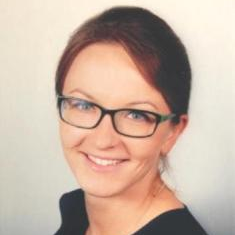Remote Sensing and GIS for Environmental Analysis and Cultural Heritage
A special issue of Remote Sensing (ISSN 2072-4292). This special issue belongs to the section "Urban Remote Sensing".
Deadline for manuscript submissions: closed (30 June 2020) | Viewed by 92011
Special Issue Editors
Interests: land change science; land use/cover change; land use modelling; statistical approaches; cadastre; environmental analysis; urban analysis
Special Issues, Collections and Topics in MDPI journals
Interests: point cloud; TLS; displacement and deformation; construction monitoring; bridge monitoring; control networks
Special Issues, Collections and Topics in MDPI journals
Special Issue Information
Dear Colleagues,
Dynamically growing remote sensing and GIS technologies are gaining popularity all over the world as tools for environmental analysis. Remote sensing additionally provides data for mapping the surface of the Earth, the identification of landslides, and environmental monitoring. This Special Issue focuses on the practice and theory of the application of modern technologies in environmental studies.
Authors are requested to submit papers on the application of remote sensing or GIS in such domains as spatial modelling and planning, spatiotemporal analysis, urban analysis, land change science, or surveying engineering. The integration of remote sensing, GIS, and modelling can provide valuable support for management and decision-making. Close-range remote sensing is a means for obtaining comprehensive and detailed spatial data on strategic objects and cultural heritage.
We will welcome contributions where remote sensing and GIS are combined with other techniques and applied in various disciplines such as land surveying, land management, environmental engineering, or landscape architecture.
The following list provides some examples of topics of interest to ensure the consistency of the papers in this Special Issue:
- Integration of remote sensing data for environmental analysis
- New tools and methods for spatial data generation
- Tracking urban growth and land use change with remote sensing technologies (e.g. LIDAR) and GIS tools
- Remote sensing tools for surveying engineering
- Modelling and visualization of spatial displacement and deformation using remote sensing (e.g. TLS)
- Remote sensing technologies and GIS tools for the diagnosis and preservation of cultural heritage
- UAV data for the mapping of erosion and landslide processes
Papers incorporating novel and interesting techniques in studying these aspects, as well as some interesting applications, will be considered. Well-prepared review papers are also welcomed.
We invite all prospective authors to share their research.
Dr. Tomasz Noszczyk
Dr. Pelagia Gawronek
Guest Editors
Manuscript Submission Information
Manuscripts should be submitted online at www.mdpi.com by registering and logging in to this website. Once you are registered, click here to go to the submission form. Manuscripts can be submitted until the deadline. All submissions that pass pre-check are peer-reviewed. Accepted papers will be published continuously in the journal (as soon as accepted) and will be listed together on the special issue website. Research articles, review articles as well as short communications are invited. For planned papers, a title and short abstract (about 100 words) can be sent to the Editorial Office for announcement on this website.
Submitted manuscripts should not have been published previously, nor be under consideration for publication elsewhere (except conference proceedings papers). All manuscripts are thoroughly refereed through a single-blind peer-review process. A guide for authors and other relevant information for submission of manuscripts is available on the Instructions for Authors page. Remote Sensing is an international peer-reviewed open access semimonthly journal published by MDPI.
Please visit the Instructions for Authors page before submitting a manuscript. The Article Processing Charge (APC) for publication in this open access journal is 2700 CHF (Swiss Francs). Submitted papers should be well formatted and use good English. Authors may use MDPI's English editing service prior to publication or during author revisions.
Keywords
- spatiotemporal analysis
- UAV data
- urban analysis
- spatial modelling
- spatial planning
- GIScience
- spatial analysis
- surveying engineering
- cultural heritage
- land change science






